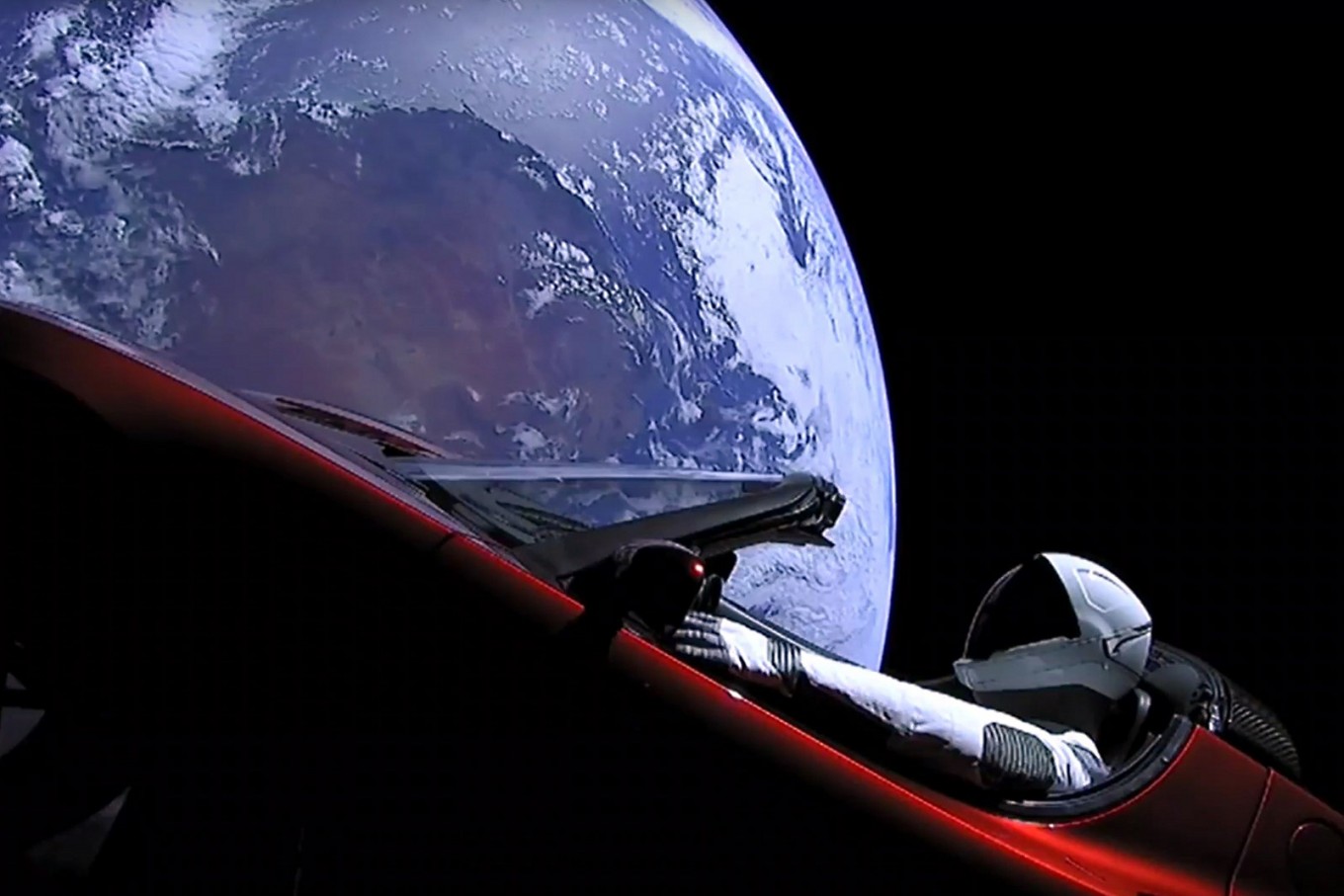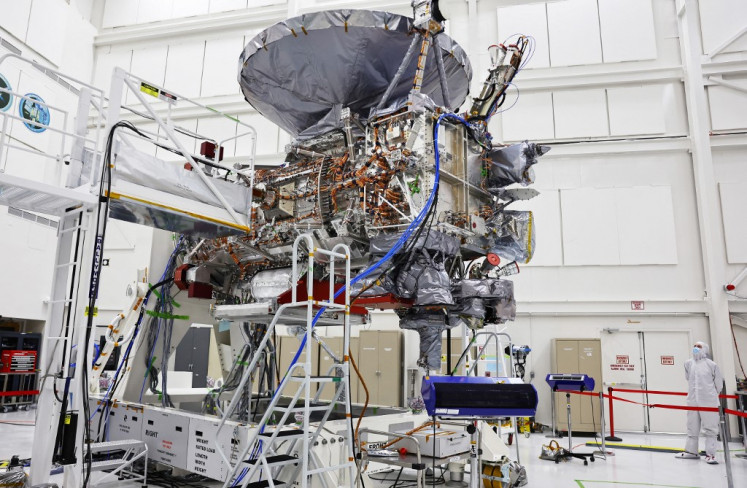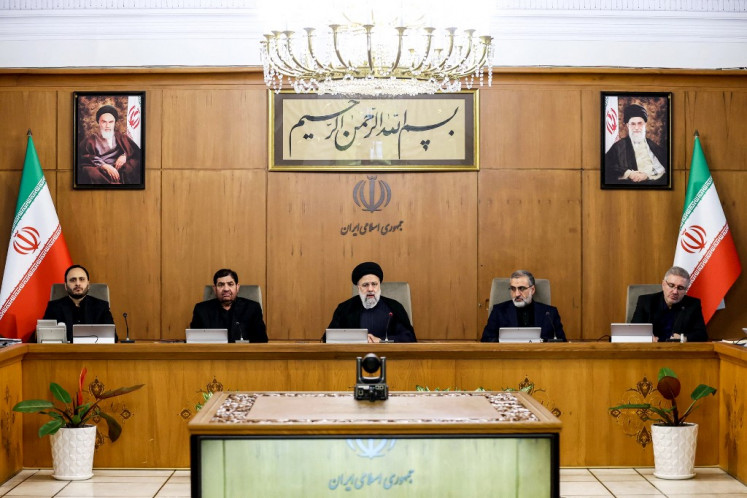What’s next for SpaceX?
The question now is what’s next for SpaceX and the space industry following the launch of Musk’s Tesla roadster into space aboard a Falcon Heavy rocket?
Change Size
 This still image taken from a SpaceX livestream video shows 'Starman' sitting in SpaceX CEO Elon Musk's cherry red Tesla roadster after the Falcon Heavy rocket delivered it into orbit around the Earth on February 6, 2018. (SpaceX/AFP/File)
This still image taken from a SpaceX livestream video shows 'Starman' sitting in SpaceX CEO Elon Musk's cherry red Tesla roadster after the Falcon Heavy rocket delivered it into orbit around the Earth on February 6, 2018. (SpaceX/AFP/File)
I
n successfully sending the world’s most powerful rocket into space, SpaceX founder Elon Musk has pulled off yet another spectacular gamble.
The question now is what’s next for SpaceX and the space industry following the launch of Musk’s Tesla roadster into space aboard a Falcon Heavy rocket?
Read also: SpaceX beams cool video of Tesla in space
Satellites
Falcon Heavy can launch far heavier payloads than other rockets — more than twice as much as its closest rival, the Delta IV Heavy rocket built by United Launch Alliance, the joint venture between Boeing and Lockheed Martin.
“Falcon Heavy opens up a new class of payload,” Musk told reporters following Tuesday’s launch from Cape Canaveral in Florida.
By blasting his electric car into space, Musk not only pulled off a publicity coup but also showed potential clients that SpaceX can deliver the goods.
Using reusable boosters, SpaceX has a cost advantage — at 90 million dollars a launch it is three times cheaper than its rivals.
It has already lured two clients: the US Air Force and Arabsat, a consortium of Arab nations seeking to have communications satellites put into orbit.
The market, however, has changed significantly since Musk announced the Falcon Heavy project in 2011.
SpaceX took a lot of time to develop its powerful rocket, and spent more than half a billion dollars doing so, according to Musk.
During that time, a lot of progress been made in increasing the capability of smaller rockets — including SpaceX’s own Falcon 9 — and reducing the size of satellites.
“There is a part of the commercial market that requires Falcon Heavy,” SpaceX president Gwynne Shotwell told the Los Angeles Times last year. “It’s there, and it’s going to be consistent, but it’s much smaller than we thought.”
Read also: Elon Musk, visionary Tesla and SpaceX founder
Moonshot
One year ago, SpaceX announced that it had signed a contract to send two paying passengers into orbit around the moon, something which hasn’t been done since NASA’s Apollo 17 mission in December 1972.
The space tourists would ride aboard a passenger version of SpaceX’s Dragon 2 capsule, which has already been used by NASA to send cargo to the International Space Station.
Space tourism is a promising industry but the costs will limit its availability for some time to the super-rich. The moonshot was planned for late this year but SpaceX has yet to commit to that timeline.
SpaceX is also not the only one eyeing the moon. In December, President Donald Trump directed NASA to set up a lunar base as a first step in a mission to Mars.
Trump was vague, however, with details, financing or a calendar for sending men to the moon or the Red Planet.
Hooking up with a private partner such as SpaceX or Blue Origin, the space company founded by Amazon’s Jeff Bezos, could be on the cards.
Read also: Five things to know about Elon Musk's space projects
Mars
Establishing a colony on Mars is Musk’s stated long-term goal and Falcon Heavy is one step in the ambitious project he outlined last year.
Falcon Heavy’s successor — and the SpaceX rocket that could make an unmanned mission to Mars — would be the irreverently-named rocket currently known as BFR, or “Big Fucking Rocket.”
BFR would eventually replace SpaceX’s Falcon 9 and Falcon Heavy rockets and the Dragon capsule.
Around 350 feet (103 meters) tall, BFR would be nearly as big and even more powerful than NASA’s Saturn V which sent astronauts to the moon in the 1960s and 1970s.
A first test flight could take place in 2019 with orbital tests in 2020 and the delivery of the first cargo to Mars in 2022.
Musk said the successful Falcon Heavy launch left him encouraged about the future of BFR.
“It gives me confidence that BFR is really quite workable,” Musk said. “It’s given me a lot of confidence that we can make the BFR design work.”
“Most of our engineering resources will be dedicated to BFR and so I think that will make things go quite quickly,” Musk said.
This article appeared on the Philippine Daily Inquirer newspaper website, which is a member of Asia News Network and a media partner of The Jakarta Post









